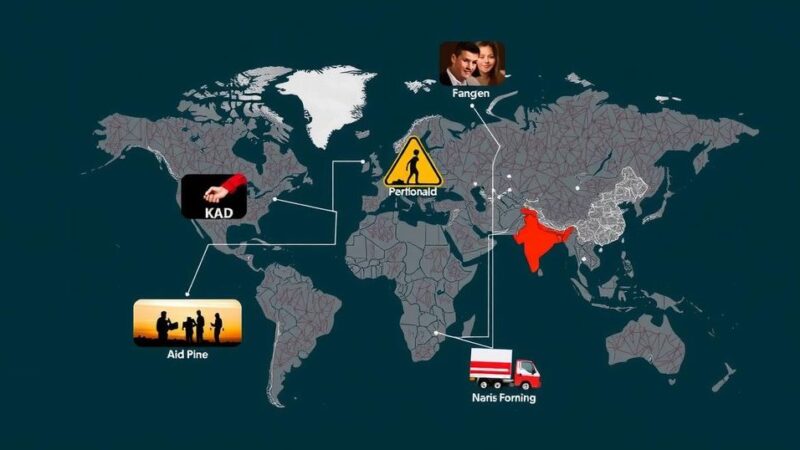Hurricane Helene has become one of the deadliest hurricanes in modern U.S. history, with a rising death toll currently ranking third since 2000, behind Hurricanes Maria and Katrina. The storm has particularly impacted North Carolina, where severe flooding resulted from unprecedented rainfall, leading to significant fatalities across multiple states. The estimated property damage caused by Helene amounts to $26 billion, raising concerns about recovery and access to essential services for affected residents.
Hurricane Helene has emerged as one of the most lethal hurricanes to impact the United States in contemporary history, with projections indicating that the death toll is likely to increase. Notably, Helene’s casualties rank as the third highest among hurricanes that have made landfall in the U.S. since the year 2000, surpassed only by Hurricane Maria in 2017 and Hurricane Katrina in 2005. Moreover, Hurricane Helene has outstripped the fatalities associated with Hurricane Ian in 2022 and the destruction caused by Superstorm Sandy in 2012, which had lost its hurricane status by the time of landfall. The devastation has been particularly severe in the mountainous regions of western North Carolina, where rainfall exceeded 20 to 30 inches within a mere span of three days, culminating in catastrophic flooding. The deluge occurred in two phases: prior to and after Helene’s landfall on Florida’s Big Bend coast as a Category 4 hurricane, boasting maximum sustained winds of 140 mph. The toll of fatalities associated with Hurricane Helene has extended from Florida up to Virginia. As of the latest reports, deaths are distributed across various states: Florida has recorded at least 19 fatalities, Georgia 33, South Carolina 41, North Carolina 61, Tennessee 11, and Virginia 2. According to the National Oceanic and Atmospheric Administration, hurricanes are historically the deadliest weather systems, and their lethality has increased in recent decades, with indirect deaths potentially inflating the actual death toll significantly. Additionally, this document provides an overview of the ten deadliest hurricanes to have affected the United States since 1954, following the initiation of regular weather forecasts. These include Hurricanes Maria, Katrina, Audrey, Camille, Diane, Sandy, Ian, Harvey, Agnes, and Hazel, each with notable statistics regarding death tolls, landfall locations, intensities, and the impacts on affected states. As of now, the death toll associated with Hurricane Helene remains uncertain, and damage estimates have reached up to $26 billion, with substantial losses in uninsured properties. The ongoing recovery efforts face significant challenges, as many regions continue to grapple with access to essential services such as water and electricity, especially in the hardest-hit areas of North Carolina. Hurricane Helene’s impact on the region is underscored by the sheer magnitude of its destruction, setting it apart as a significant weather event in the annals of modern meteorological history.
Hurricane Helene is regarded as one of the deadliest hurricanes in modern U.S. history, primarily due to its substantial human and economic toll. Striking in a time when weather forecasting has become increasingly refined, Helene’s arrival took place with full awareness of its potential dangers, yet the impacts were immense, particularly in regions ill-equipped for such catastrophic flooding. The historical context of hurricanes in the U.S. reveals a trend of increasing fatalities and damages, illuminating the growing threat posed by severe weather events amid climate change. The statistics surrounding past hurricanes further highlight the lethality and destruction associated with such storms, providing necessary perspective on Helene’s impact.
In conclusion, Hurricane Helene stands as a stark reminder of the destructive potential of hurricanes in the U.S. Its rising death toll and extensive damage underscore the urgent need for enhanced preparedness and response strategies in dealing with extreme weather phenomena. Historical comparisons with prior hurricanes foreground the necessity of ongoing research and improvements in forecasting and risk management to mitigate the impacts of future storms.
Original Source: www.washingtonpost.com






